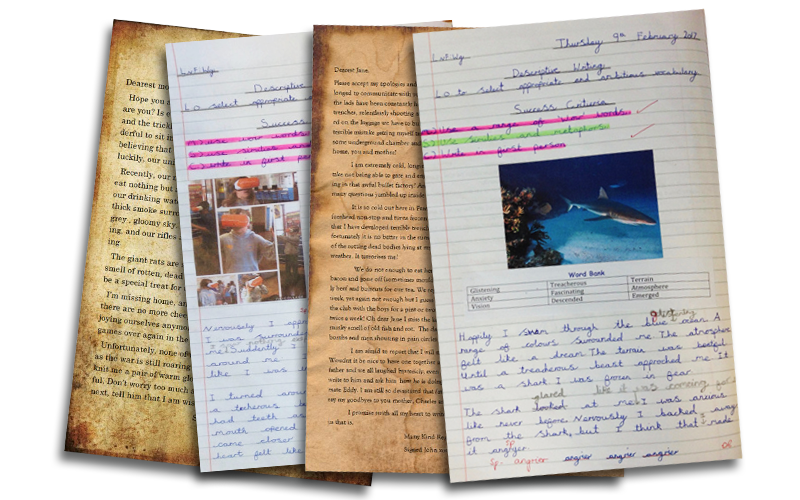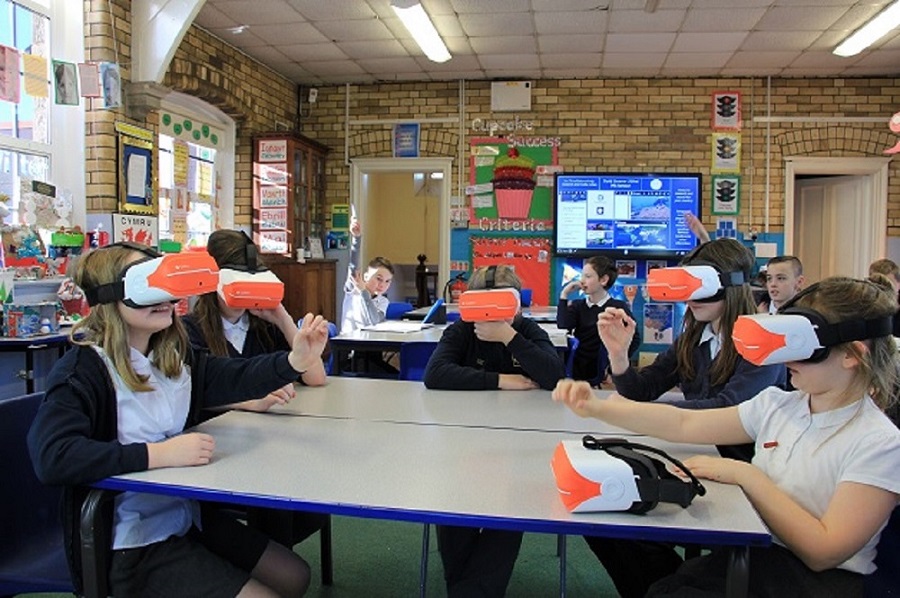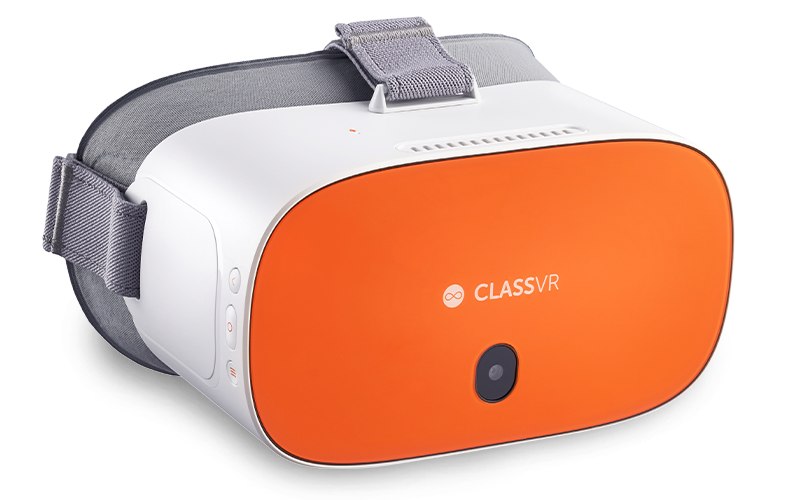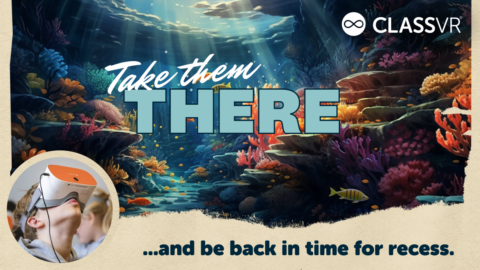The Digital Competence Framework (DCF) has been introduced into the curriculum in Wales to provide students with the knowledge and skills needed to confidently, creatively and critically use technologies. The framework comprises 4 strands: Citizenship, Interacting and Collaborating, Producing and finally Data and Computational Thinking. These strands have then been broken down into several elements, which can be achieved and consolidated through classroom activities.
ClassVR is the world’s first complete virtual and augmented reality set designed specifically for schools, with standalone headsets, intuitive gesture controls, a huge library of content and an easy-to-use teacher management portal. Here, we provide some ideas on how ClassVR can be used to cover each of the 4 strands of the framework.
CITIZENSHIP

This strand is focused on students gaining the skills needed to contribute to the digital world around them. They will be prepared for the positive and negative aspects and will develop strategies and tools to aid them as they become independent consumers and producers. When creating or importing their own 360 content using CoSpaces or a 360 camera, students should discuss the importance of asking for permission before sharing images of others.
INTERACTING AND COLLABORATING

This strand looks at how students view methods of electronic communication and know which are the most effective to use. Students will also need to be able to store data and use collaboration techniques successfully. Using the ClassVR headset, students can work in pairs, helping to facilitate communication. One student would wear the headset, while their partner asks questions about their experience, encouraging the other to refine their description and develop their vocabulary.
Students could also work together to create their own 360 environment using CoSpaces. They will then be able to view their spaces using the ClassVR headsets and discuss if they could improve them and how.
Additionally, students could be set the task of finding appropriate images to send to the headsets. They would not only need to find the images in the correct format, but also save them in the correct location so as they can be accessed by the teacher. Students could engage in a discussion about different file sizes and the impact that can have on both the time taken to load to the headsets as well as the quality of the images.
PRODUCING

This strand is centred around the process of planning, creating, evaluating and refining digital content, including the production of text, graphics, audio and video. Students can use the ClassVR headsets to create a multisensory experience; they could create a purely visual experience and then add in an audio recording. This could form the basis for creative or non-fiction writing about the particular setting or environment the students have created.
Students could use the headsets to evaluate the effectiveness of the changes made to images – they can then show other students and teachers their work and use the feedback to make any necessary changes or improvements.
DATA AND COMPUTATIONAL THINKING

Students will need to understand problems and methods that can be applied to solving them. By using CoSpaces, students can use the coding option either using Blockly or JavaScript to control objects in the 360 space they have created.
Another element to this strand is about students looking at how data and information links into our digital world, and providing them with essential skills for the modern workplace. Students could be assigned the task of planning a trip to a ClassVR destination. They will be given details of a budget, from which they will need to buy travel, accommodation and 3 activities to do. Students will need to use their understanding and knowledge of databases to save all the relevant information they have collected in their own spreadsheet.
The introduction of the Digital Competence Framework into the curriculum is essentially about being able to provide young people with the skills that employers will look for when students leave education for the world of employment.
For further information about the DCF and how to introduce digital learning into your lessons, please visit the Learning Wales website at www.learning.gov.wales



